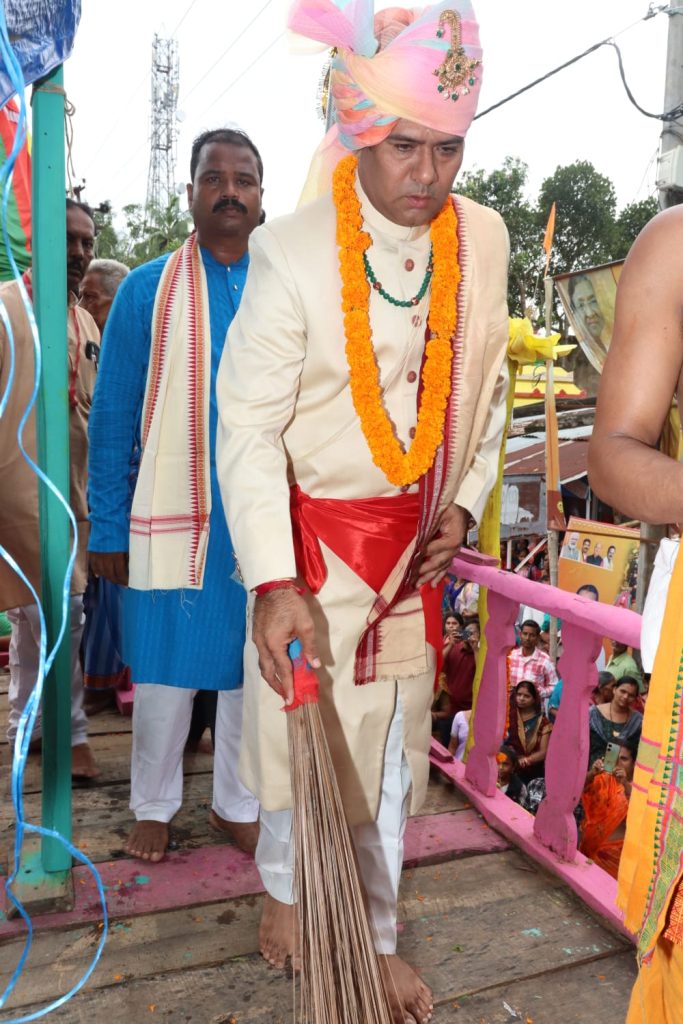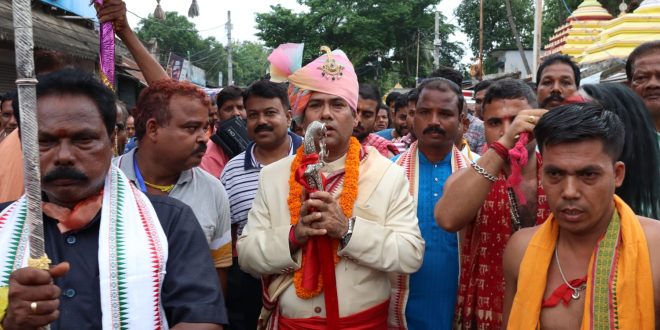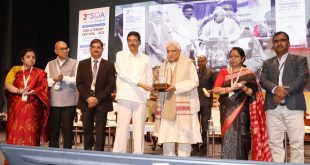Khandapada: In a spiritually vibrant and traditional setting, Yuvraj Siddharth Shekhar Singh, son of Bibhuti Bhushan Singh Mardaraj, the erstwhile king of Khandapada, performed the revered Chera Pahara ritual during the annual Rath Yatra of Lord Jagannath at the historic Khandapada Garjat Temple.
This cherished ritual, symbolic of humility and service, was undertaken by the Yuvraj in place of his father, Raja Bibhuti Bhushan Singh Mardaraj, who was unable to participate this year due to health reasons. On medical advice, the Raja delegated the ceremonial duty to his son, continuing an unbroken royal legacy.
As per long-standing tradition, the Rajguru and temple priests brought the Agyanmala (divine garland of command) from the chariot to the royal palace. After offering rituals and prayers, Yuvraj Siddharth was formally invited to the temple grounds.
Amid the resonating sounds of conch shells, drums, traditional music, and the celebratory chants of “Jai Jagannath”, he was escorted in a royal procession to the waiting chariot.
Upon reaching the chariot, the Yuvraj performed the Chera Pahara ritual – sweeping around the chariot with a golden-handled broom, a symbolic act of devotion and servitude to the deity.

The event drew thousands of devotees from Khandapada and neighboring regions, all eager to witness the sacred tradition carried out by the young prince. The atmosphere was electric with religious fervor and cultural pride.
The Rath Yatra in Khandapada traces its origins back to the reign of Raja Niladri Singh Mardaraj (1775-89), who constructed the temple inspired by the Jagannath Temple in Puri. He initiated the Rath Yatra here and personally performed the Chera Pahara, establishing a legacy that has been preserved by successive generations of the royal family.
 Update Odisha-Latest Odisha News I Breaking News Get latest news on Odisha, Govt. Jobs, OSSC, OPSC, Entertainment, Crime, Sports, and Education
Update Odisha-Latest Odisha News I Breaking News Get latest news on Odisha, Govt. Jobs, OSSC, OPSC, Entertainment, Crime, Sports, and Education



